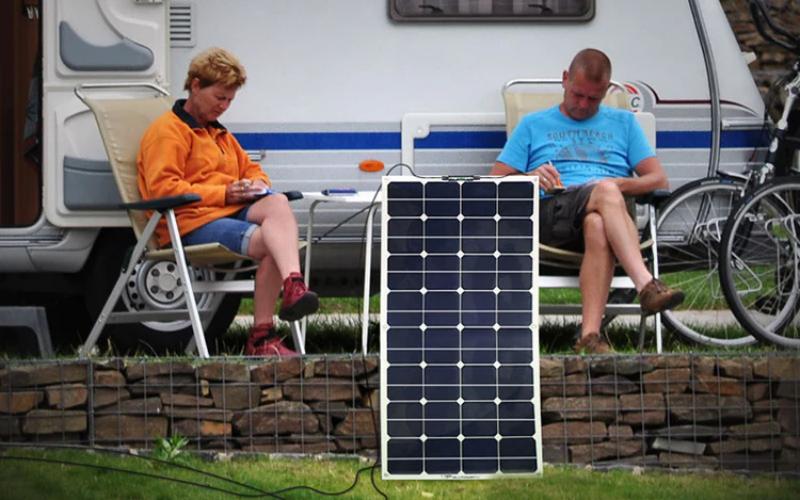As a pioneer of clean energy, solar energy has brought people a kind of convenient and efficient energy that does not pollute the environment. It has developed to this day and is widely used in many industries and homes. As you walk through the community you can see the solar panels on many houses, black, blue, standing and lying flat.
Do you know the difference between them?
Today I will show you four different types of solar panels and analyze them based on the four dimensions of function, structure, price and efficiency. Finally, we attach the kind of application scenarios for you.
Monocrystalline solar modules
Features: Monocrystalline solar panels are mainly black, made of pure silicon, fixed on non-continuous plate, and have excellent high temperature resistance and longer service life
Structure: Cut pure silicon into wafers and arrange them into a rectangle and add a metal shell as a protective layer
Price: Usually high. Compared to polycrystalline and thin film solar panels, the cost is higher because the material used is pure silicon and the quality is better
Efficiency: The efficiency can reach 21%, which is very high. It is a model for everyday household use. The power often exceeds 300 W or even reaches 400 W.
Polycrystalline solar panels
Features: The color is mainly blue. Just like monocrystalline, it is made of silicon, but the quality of silicon is not as good as monocrystalline. It is easier to manufacture, but cannot work at high temperatures for a long time.
Structure: It is made of silicon, which is melted in the container and then cut into wafers. Finally arrange and combine into a rectangle.
Price: Medium, much lower than single crystal price, and silicon quality and lifetime are reduced
Efficiency: Due to material problems, the efficiency is reduced by 5%-6% compared to single crystal, between 15%-17%.
Concentrated PV cell
Features: Curved mirror surface, The panel has a solar tracker to help it follow the sun.
Structure: The curved mirror collects the sunlight to achieve better results. It can only work when exposed to sunlight. The internal tracker and a full set of operating systems can work well.
Price: Very high, not suitable for everyday household use
Efficiency: Very high up to 41%, which is twice that of a monocrystalline solar module. This is based on a complete system, and the combination of various details can achieve super high efficiency.
thin-film solar modules
Characteristics: The color is mainly black or blue depending on the composition of the battery. It is foldable and flexible. It is the most common of the four types and the easiest to wear. The thickness is only 1/350 of monocrystalline solar panels. Most foldable and flexible solar panels on the market are made with thin film silicon. (ALLPOWERS foldable solar panels and flexible solar panels are made of thin film silicon)
Structure: Battery materials are mainly three types of materials, CdTe, a-si and CIGS.
Price: The cost is the cheapest compared to other solar panels. But it also has the shortest lifespan.
Efficiency: Thin film is the lowest efficiency among the four batteries, between 8% and 10%.
What kind of solar panels should I choose?
For monocrystalline and polycrystalline solar modules
They are suitable for rooftop, RV and provide solar power, make a wise choice according to your own budget. The advantage of polycrystalline is cheap, but the efficiency of monocrystalline is much better.
For thin-film solar modules
It is mainly suitable for all kinds of portable solar products and solar power banks. It's not very effective, but it can be used in an emergency in the sun. It's a good choice for outdoor activities.
For concentrated PV cell
It has the highest efficiency, the highest cost and the most difficult operation. It is mainly used in various new solar power plants. It's not a good choice for individuals or families. It is a decision at the national energy development level.
